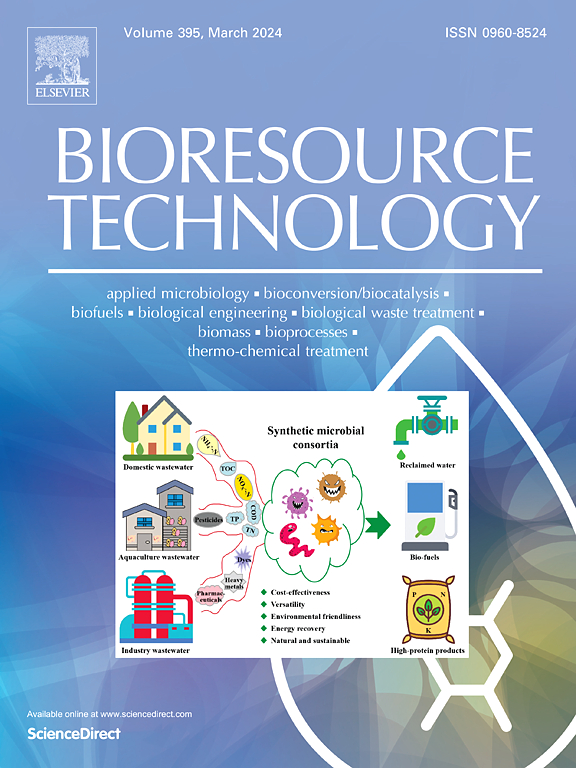Engineered interaction elements enable enhanced multi-enzyme assembly and cascade biocatalysis for indigo synthesis
IF 9.7
1区 环境科学与生态学
Q1 AGRICULTURAL ENGINEERING
引用次数: 0
Abstract
Efficient interacting peptides or protein scaffolds can be used to achieve multi-enzymatic cascade reactions to trigger substrate channeling effect, prevent intermediate diffusion, and control the flux of metabolites. However, the limited availability of existing interactive elements hinders the broad application of the multi-enzyme assembly strategy. Here, a peptide-peptide pair (PB1C/PB2N) and a protein-peptide pair (importin/PB2C) were fused to the target protein to induce protein assembly for the first time. The newly developed interactive elements, when combined with the existing RIDD/RIAD pair, can more efficiently achieve multi-enzymatic cascade reactions. The indigo synthesis pathway was optimized through cascade biocatalysis based on these interactive elements. As a result, compared with the co-expression of multiple enzymes, the interaction element-based cascade biocatalysis increased the yield of indigo by twofold. Our results demonstrate the potential of PB1C/PB2N and importin/PB2C scaffold systems as tools for enzyme assembly to control metabolic flux and increase the efficiency of biosynthetic pathways.

求助全文
约1分钟内获得全文
求助全文
来源期刊

Bioresource Technology
工程技术-能源与燃料
CiteScore
20.80
自引率
19.30%
发文量
2013
审稿时长
12 days
期刊介绍:
Bioresource Technology publishes original articles, review articles, case studies, and short communications covering the fundamentals, applications, and management of bioresource technology. The journal seeks to advance and disseminate knowledge across various areas related to biomass, biological waste treatment, bioenergy, biotransformations, bioresource systems analysis, and associated conversion or production technologies.
Topics include:
• Biofuels: liquid and gaseous biofuels production, modeling and economics
• Bioprocesses and bioproducts: biocatalysis and fermentations
• Biomass and feedstocks utilization: bioconversion of agro-industrial residues
• Environmental protection: biological waste treatment
• Thermochemical conversion of biomass: combustion, pyrolysis, gasification, catalysis.
 求助内容:
求助内容: 应助结果提醒方式:
应助结果提醒方式:


